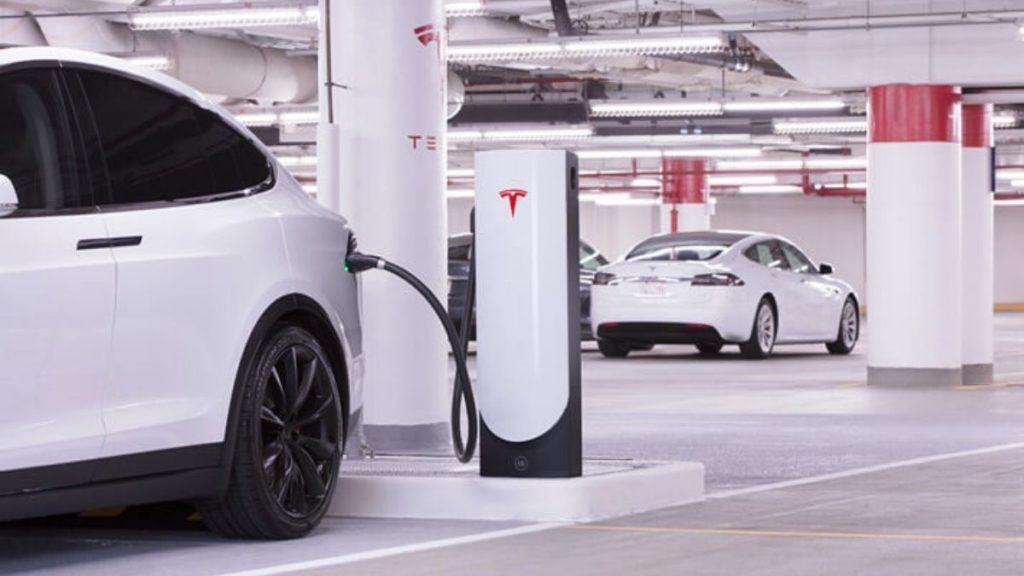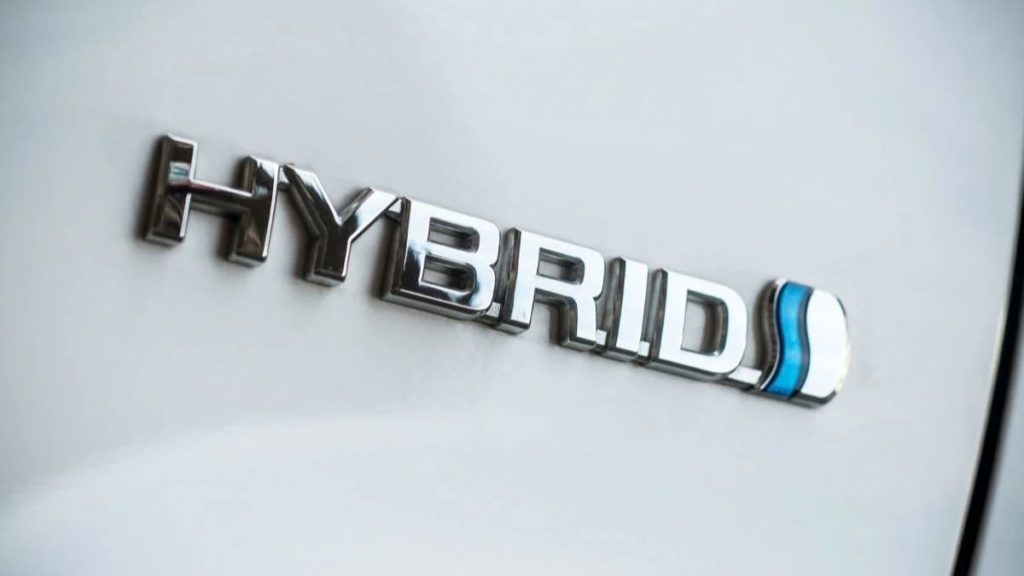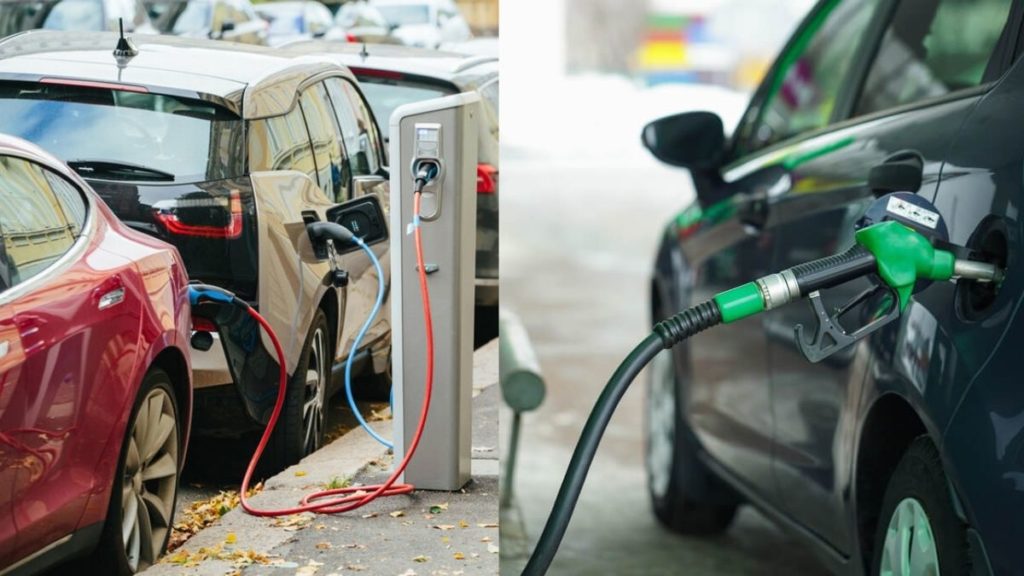Sooner or later, all conventional gasoline cars will get replaced by either electric or hybrid vehicles. Everyone is pretty much aware of the harmful side effects of IC engine vehicles on the environment.
Since there are plenty of electric and hybrid cars available on the market, the masses want to buy them. However, not everyone is aware of the difference between the two.
Before we directly jump onto the main differences, lets have an overview of both type of cars.
What Is An Electric Car And How Does It Work?

Unlike IC engine vehicles, electric cars don’t have an engine. Therefore, they don’t need any fuel to run. However, there’s a set of electric batteries, induction motors, and inverter that altogether powers an electric car.
The electric batteries send power to the induction motor via an inverter, and finally motor transmits power to the wheels.
Since there is a huge battery inside an electric car, it needs an electric source to get charged. The size of the battery generally determines the power and electric range of the car.
Some of the most common electric cars are: Tesla Model 3, Hyundai Kona EV, Audi e-tron, etc.
Also Read: How Do Electric Cars Work? Everything You Need To Know.
Advantages Of Electric Vehicles
- The biggest advantage of electric vehicles is that they produce zero emissions which makes them environment friendly.
- Electric cars are noise-free as they generally produce very little or no sound.
- Low Maintenance and low running cost.
Disadvantages
- Need a lot of time to get charged: Usually 7-8 hours using a standard charger and 30-45 minutes using fast DC chargers.
- Most EVs don’t have a very long-range; hence, they cannot be taken for long drives.
- Not a wise option if the place you are living in doesn’t have a good charging infrastructure.
What Is A Hybrid Car And How Does It Work?

Hybrid cars can be described as a combination of both electric and conventional ICE vehicles. A hybrid car generally has both an electric motor and a combustion engine.
However, there are mainly three types of hybrid vehicles: a full hybrid (FHEV), a mild hybrid vehicle, and a plug-in hybrid (PHEV). They can operate in different modes like series, parallel, and an all-electric mode based on the configuration of the hybrid car.
In electric mode, the vehicle is driven by batteries and motors. In parallel mode, the IC engine, as well as the electric motor, work together to propel the vehicle. Furthermore, in series mode, the electric motors run the vehicles at low speed on the EV mode but at the same time, the combustion engine is used for charging the batteries.
Full Hybrid (FHEV)
Full hybrid cars can operate in both series and parallel mode. At lower speeds the vehicle runs on series mode, FHEV can also have a dedicated EV mode. At higher speeds, both combustion engine and electric motor work in parallel to provide power.
Full hybrid cars are self charging and do not need any external power source to get charged. A very common example of FHEV is the Toyota Prius.
Mild Hybrid
In this type, there’s a small battery and motor in addition to the combustion engine. It operates in parallel mode and both the engine and battery work simultaneously. The motor assists in overall driving and improves the efficiency as well as reduces emissions. Most automakers use a regenerative braking system to convert the kinetic energy generated while braking to charge the battery.
Some of the most common mild hybrid cars are: Maruti Suzuki Ciaz, MG Hector, Toyota Glanza etc.
Plug In Hybrid
In a plug-in hybrid car, there is a separate EV mode with a short pure electric range of around 50-100 km. The driver can switch between electric and ICE mode as per their wish. However, unlike the mild-hybrid system, it doesn’t charge itself. It requires an external cable, just like an EV, to get charged.
Some examples of plug-in hybrid cars are: Hyundai Ioniq plug-in hybrid, Toyota Prius Prime etc.
Furthermore, for more details on plug-in hybrid and mild hybrid vehicles, click on this link.
Electric Vs Hybrid Cars: Which One Is Better And Why?

Both types of cars have their own pros and cons. It largely depends on the purpose of buying a car.
If you are a petrolhead and think about the environment, then a hybrid is a good option. Also, people looking for a better fuel-efficient car can give hybrid vehicles a thought as they deliver pretty good mileage.
A hybrid powertrain also provides additional performance as the motors can generate more torque. Hence, it can improve the acceleration as well as torque of a car.
On the other hand, electric cars are silent, pollution-free vehicles. In addition, electric cars are very quickly accelerating vehicles in the world. In terms of acceleration, they are way better than combustion cars and even better than hybrid cars.
Also Read: 5 Electric Cars That Are Quicker Than Bugatti Chiron
If you want a zero-emission car or a quick accelerating one. Also, if you mostly commute within the city then we suggest an electric car is a perfect choice for you.
However, if you just want to have an upgraded and lower emission producing ICE car then hybrid is a better option.
In short, if you want to enjoy the best of both the worlds the hybrid is a perfect option, otherwise go for electric.
The post What Is The Difference Between Electric And Hybrid Cars? Explained appeared first on Fossbytes.
What Is The Difference Between Electric And Hybrid Cars? Explained
read more
No comments:
Post a Comment